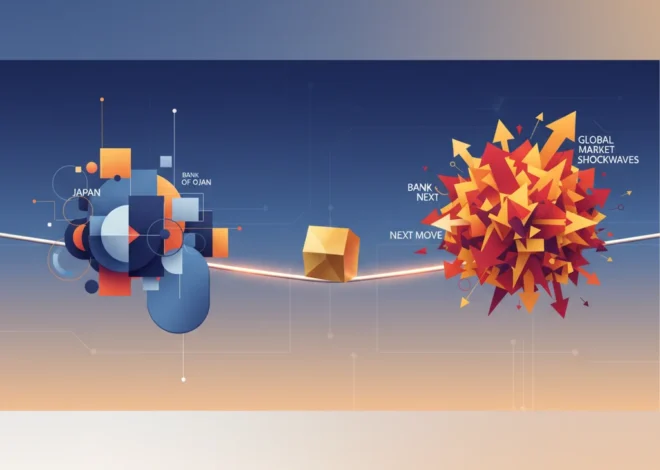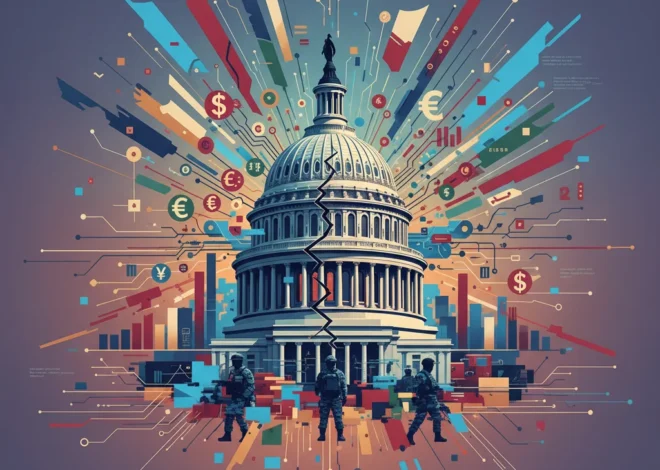
Cracking the Code: A Crossword Solver’s Guide to Navigating the Financial Markets
There’s a unique satisfaction that comes from solving a difficult crossword puzzle. It’s a moment of clarity when disparate clues, cryptic anagrams, and intersecting words finally coalesce into a coherent whole. The grid, once a daunting canvas of black and white squares, becomes a testament to logic, patience, and pattern recognition. This very same mindset—the methodical, analytical approach of a seasoned cruciverbalist—is perhaps one of the most powerful tools an individual can possess when navigating the intricate world of modern finance.
The global economy, much like the Financial Times crossword that inspired this perspective, is not a series of random events. It is a complex grid of interconnected factors. Each piece, from a central bank’s interest rate decision to the launch of a new fintech application, is a clue. To succeed, investors, business leaders, and finance professionals must learn to solve for both the sweeping “across” clues and the specific “down” clues, understanding how they intersect to reveal the bigger picture.
The “Across” Clues: Understanding Macroeconomic Forces
In any crossword, the “across” clues often set the stage. They are the long, foundational answers that span the grid and provide the structural context for many other words. In the world of investing and economics, these are the macroeconomic forces—the broad, horizontal trends that impact everyone.
Think of concepts like:
- Inflation: This is a 10-letter word that can redefine the entire puzzle. When inflation rises, the purchasing power of money decreases, compelling central banks to act. This single clue affects everything from consumer spending to corporate earnings and bond yields.
- Interest Rates: Often the answer to the inflation clue, central bank interest rate policies are a critical “across” entry. A hike can cool down an overheating economy but may put pressure on the stock market, particularly growth-oriented sectors. According to analysis from the International Monetary Fund, rising interest rates significantly impact corporate balance sheets and investment decisions.
- Geopolitical Events: An unexpected event, like a trade dispute or a supply chain disruption, is like a surprise theme in a puzzle. It forces you to re-evaluate your existing answers and consider new possibilities, impacting commodity prices, international trade, and market sentiment.
- GDP Growth: The ultimate measure of an economy’s health, Gross Domestic Product is a foundational clue that tells you whether the overall economic puzzle is expanding or contracting.
–
Solving for these “across” clues provides the framework. It’s impossible to understand the viability of a single company without first understanding the economic environment in which it operates. Ignoring them is like trying to solve a puzzle by only looking at one corner of the grid.
Beyond the Headlines: Decoding the £22 Energy Bill Drop and Its Ripple Effect on the UK Economy
The “Down” Clues: Deep Dives into Microeconomic Details
While the “across” clues provide the context, the “down” clues provide the substance. These are the specific, vertical entries that represent individual companies, sectors, and assets. This is where fundamental analysis comes into play—the meticulous process of examining the health and valuation of a single entity.
Key “down” clues for an investor include:
- Corporate Earnings: The quarterly earnings report is a direct clue to a company’s profitability and operational efficiency. Is the company meeting, exceeding, or falling short of expectations?
- Balance Sheet Strength: Analyzing a company’s assets, liabilities, and equity is like checking the letter count for a clue. Does the company have a sustainable debt level? Does it have enough cash to weather a downturn?
- Valuation Metrics: Clues like the Price-to-Earnings (P/E) ratio or Enterprise Value to EBITDA help you determine if a stock is overvalued, undervalued, or fairly priced relative to its peers and its own historical performance.
- Management and Moat: This is a more qualitative clue. Does the company have a visionary leadership team? Does it possess a competitive advantage, or “moat,” that protects it from competitors?
An investor focused solely on macro trends without drilling down into these details is like knowing all the 7-letter words in a puzzle must end in “S” but having no idea what the preceding letters are. The details are where value is truly uncovered.
Where Clues Intersect: The Power of Diversification
The true magic of a crossword happens at the intersections, where an “across” word shares a letter with a “down” word. This is a perfect metaphor for asset allocation and portfolio construction. An investment portfolio isn’t just a collection of “down” clues (individual stocks); it’s how those stocks interact with the “across” clues (macroeconomic conditions).
For example, a technology stock (a “down” clue) might thrive in a low-interest-rate environment (an “across” clue) but struggle when rates rise. Conversely, a consumer staples company might be more resilient during an economic downturn. A well-diversified portfolio contains answers that perform differently under various conditions, ensuring that a tough patch in one part of the grid doesn’t ruin the entire puzzle.
The table below illustrates how different asset classes can intersect with broad economic conditions, highlighting the importance of a balanced approach to trading and investing.
| Economic Condition (Across Clue) | Potential Asset Performance (Down Clue) |
|---|---|
| High Growth, Low Inflation | Growth Stocks (e.g., Tech) and Real Estate tend to perform well. Bonds may underperform. |
| High Inflation, Slowing Growth (Stagflation) | Commodities and Inflation-Protected Securities (TIPS) may outperform. Equities and long-term bonds often struggle. |
| Recession, Falling Inflation | Government Bonds and defensive stocks (e.g., Utilities, Healthcare) are often seen as safe havens. |
| Moderate Growth, Stable Inflation | A balanced portfolio of equities and bonds is often favored. This environment supports broad market gains. |
Bitcoin's Crossroads: Decoding the Megaphone and Death Cross Warning Signs
The Cryptic Clues: Demystifying Fintech and Blockchain
Every challenging crossword has its cryptic clues—the anagrams, hidden words, and double meanings that require you to think differently. In modern finance, the rise of financial technology and blockchain represents this cryptic layer. These innovations are rewriting the rules of traditional banking and asset management.
Concepts like Decentralized Finance (DeFi), smart contracts, and tokenization can seem as perplexing as a clue that reads “Confused cat ate gin for a financial instrument (8).” (The answer is “TRADING”). But once you understand the underlying logic, they reveal a new world of possibilities.
- Fintech: This is fundamentally about using technology to improve or automate financial services. Think of mobile banking apps, robo-advisors, and peer-to-peer lending platforms. They are making finance more accessible, efficient, and user-friendly. The global adoption of fintech services has surged, with a report from Ernst & Young showing that a majority of consumers now use fintech solutions in their daily lives.
- Blockchain: This is the underlying technology for cryptocurrencies like Bitcoin, but its potential extends far beyond digital cash. It’s a secure, decentralized ledger that can record transactions or transfer ownership of assets without a central intermediary like a bank.
- DeFi: Built on blockchain technology, DeFi aims to create an open-source, permissionless, and transparent financial service ecosystem. It allows for lending, borrowing, and trading directly between users, governed by code instead of institutions.
Solving these “cryptic clues” requires a willingness to learn a new language and a new set of rules. For investors and business leaders, ignoring them is a risk, as they represent one of the most significant evolutions in the financial puzzle in generations.
The “Aha!” Moment: Assembling a Coherent Strategy
The ultimate goal of a crossword is the “Aha!” moment when the last square is filled in, and a complete, correct grid emerges. In investing, this is the moment your research, analysis, and strategic decisions come together to form a coherent, well-defined financial strategy that aligns with your goals.
This final picture is not built on a single lucky guess. It’s the result of a disciplined process:
- Reading All the Clues: Conduct thorough research across macroeconomic trends and specific investment opportunities. Don’t fall in love with a single stock without understanding the broader context.
- Penciling in Answers: Formulate a hypothesis, but be willing to revise it. In investing, this means starting with small positions or using watchlists to track assets before committing significant capital.
- Using Intersections to Verify: Check how your investment ideas fit together. Are you overly concentrated in one sector? Are your assets correlated in a way that exposes you to unnecessary risk? Diversification is your verification tool.
- Stepping Back to See the Big Picture: Regularly review your entire portfolio. Does it still align with your long-term goals and risk tolerance? The puzzle’s clues can change, and your strategy must adapt accordingly.
Conclusion: From Puzzled to Proficient
The stock market and the broader financial world can seem intimidating, much like a blank crossword grid from a prestigious publication. It’s a complex web of jargon, data, and seemingly unpredictable movements. However, by adopting the patient, methodical, and inquisitive mindset of a puzzle solver, anyone can learn to navigate it effectively.
Start with the big “across” clues of the global economy. Drill down into the “down” clues of individual assets. Understand how they intersect, and don’t be afraid to tackle the “cryptic” innovations of fintech and blockchain. By doing so, you move from being a passive spectator to an active participant, capable of piecing together the clues to build a sound financial future. The puzzle is vast, but it is not unsolvable.


